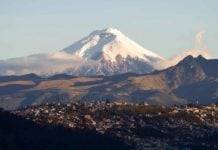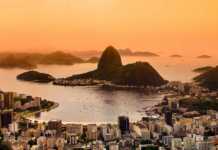South America is a continent filled with history and natural beauty, so it isn’t surprising that UNESCO has chosen sites in the different countries to join their World Heritage list. In total, there are 72 UNESCO World Heritage Sites in South America, chosen for their cultural, historical, or scientific significance, or simply for their stunning landscapes. If you are planning a trip to any of the 13 countries of South America, you should visit at least one UNESCO World Heritage Site if you can, but which to choose? Many countries have more than one so you will be spoiled for choice. To help you decide, I have gathered what I think are the 20 most impressive UNESCO World Heritage Sites to tell you about.
Contents
- 20 Most Impressive UNESCO World Heritage Sites In South America
- 1- Machu Picchu, Peru
- 2- Galapagos Islands
- 3- Cuzco, Peru
- 4- Chiribiquete National Park, Colombia
- 5- Chavin, Peru
- 6- Chan Chan Archaeological Zone, Peru
- 7- Brasilia, Brazil
- 8- Atlantic Forest South-East Reserves, Brazil
- 9- Easter Island (Rapa Nui)
- 10- Cartagena, Colombia
- 11- Iguacu/Iguazu National Park, Brazil and Argentina
- 12- Ischigualasto/Talampaya National Parks, Argentina
- 13- Los Glaciares National Park, Argentina
- 14- The Churches of Chiloe, Chile
- 15- Cueva de la Manos, Rio Pinturas, Argentina
- 16- Arequipa, Peru
- 17- San Augustin Archaeological Park, Colombia
- 18- Sucre, Bolivia
- 19- Quebrada de Humahuaca, Argentina
- 20- Huascaran National Park, Peru
20 Most Impressive UNESCO World Heritage Sites In South America
1- Machu Picchu, Peru
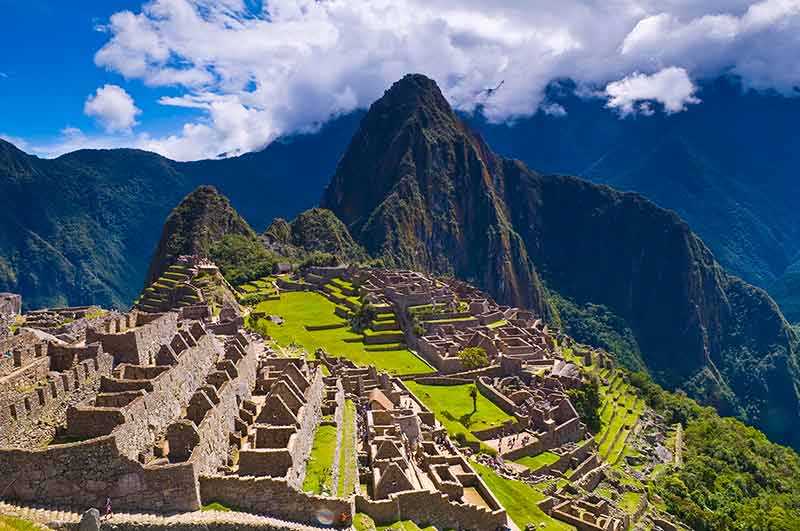
Machu Picchu, also known as the Lost City of the Incas, is South America’s most famous and most visited site.
It was designated a UNESCO World Heritage Site in 1983 and is a mixed heritage site, combining natural beauty with historical significance.
Machu Picchu is a striking and well-preserved mountain estate built in the middle of the 15th century.
It was inhabited mainly by Incan priests, women, and children and is composed of terraces and buildings carved from rock.
It was deserted after 100 years but it isn’t known why as this was before the Spanish conquerors arrived.
Machu Picchu isn’t easy to get to as it is 2,340.8 metres (7680 feet) above sea level, but this doesn’t stop thousands of people visiting it each year both for the impressiveness of the site and for the amazing views.
There are two ways to get there, either by hiking the Inca Trail or by going by train to Aguas Calientes and then getting a bus.
There are three mountains you can climb at Machu Picchu, from where you will be rewarded by magnificent views of the site and the Andes mountains.
Recommended tour: Luxury Machu Picchu Tour by Hiram Bingham Train
2- Galapagos Islands
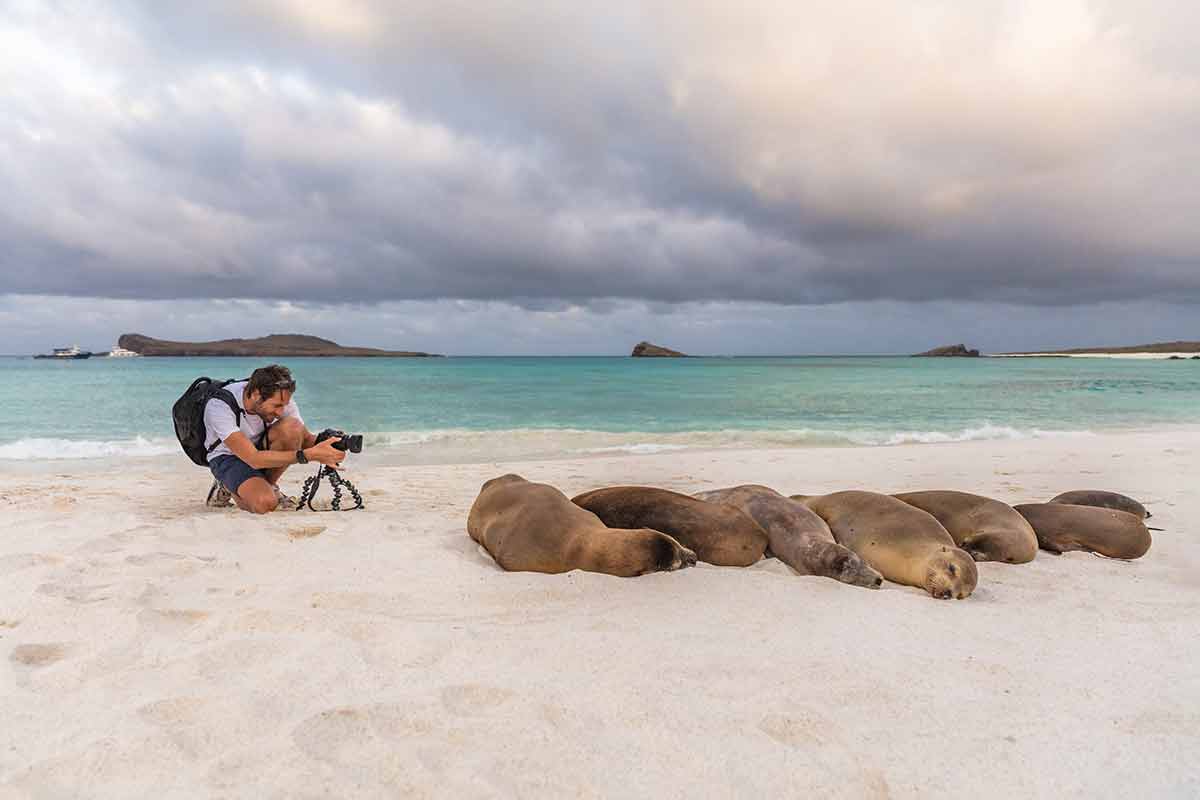
The Galapagos Islands in Ecuador were designated a UNESCO World Heritage Site in 1978 both for their natural beauty and for their historical significance.
Historically, Charles Darwin, the great naturalist, developed his theory of evolution by studying the natural life of these islands.
The islands are still home to many species of animal, sea, and bird life, including the Galapagos Giant tortoise, the Galapagos sea lion, the blue-footed boobie, the Galapagos penguin, the marine iguana, and the waved albatross.
In total, there are nearly 9,000 different species that live in the area.
The islands are also known for their volcanoes which have been active for 20 million years.
The best way to discover these islands is by cruise ship though there are inter-island shuttles between the inhabited islands.
Recommended tour: 8 Day Galapagos Island Hopping
3- Cuzco, Peru
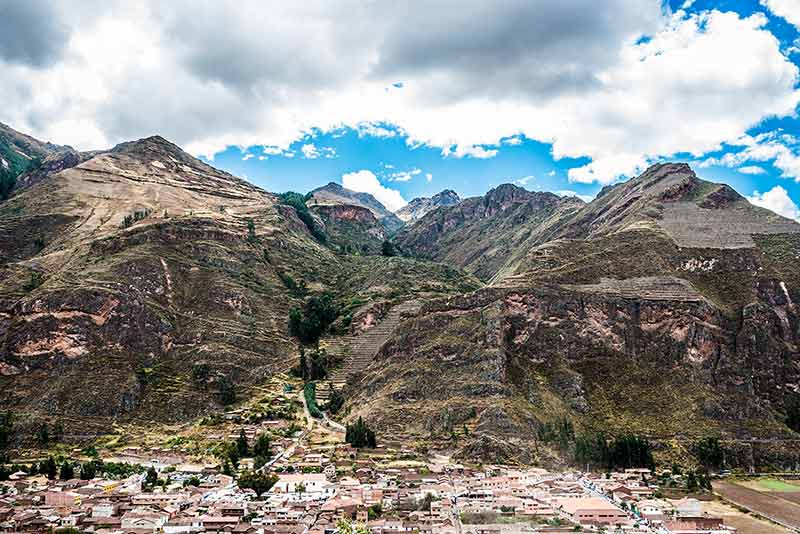
Cuzco in Peru was designated a UNESCO World Heritage Site in 1983 for its historical significance.
It was the centre of the Inca Empire in the 15th century, ruled by King Pachacutec and was divided into different sections for religious, agricultural, administrative, and artisan uses.
However, the city fell to the Spanish in 1533, and the Spanish built a new city on top of the ruins of Cusco.
The Spanish architecture is beautiful with Baroque and Renaissance churches and mansions to be seen.
They are made more impressive, however, because they are mixed with the remnants of Incan architecture.
Be sure to visit the Inca Museum while you are in Cuzco.
There are two pre-Inca rooms which go back to 5,000 BC.
The Inca artefacts include wood carvings, bronze mirrors, jewellery, cutlery, bowls, and instruments.
There are also some fascinating Incan mummies and even skulls.
Recommended tour: Cuzco City Tour and Archaeological Ruins in Half Day
4- Chiribiquete National Park, Colombia
The Chiribiquete National Park was designated a UNESCO World Heritage Site in 2018 for both its beauty and its ,historical significance.
It is in the northwest of the Colombian Amazon and is filled with sandstone plateaus and striking table-top mountains.
It covers a massive 4.3 million hectares (10.6 acres) and houses the biggest tropical rainforest in the world.
There is plenty of wildlife inhabiting the park including giant anteaters, giant otters, jaguars, and woolly monkeys, as well as the Chiribiquete emerald hummingbird, the only endemic bird species in the park.
When it comes to the historical aspect, there are over 75,000 paintings near the base of the mountains in the rock shelters.
It is believed that these paintings date back at least 20,000 years and show dancing, hunting, and battles.
There are even pictures of people worshipping the jaguar.
5- Chavin, Peru
Located in the Huari Province in Peru, Chavin was designated a UNESCO World Heritage Site in 1985.
It is an archaeological complex spanning 12,000 square metres (129,167 square feet) and is pre-Inca dating to 1,500 – 300 BC when it was occupied by the Chavin people, a religious-based society.
The site is split into two parts, the New Temple and the Old Temple which are linked by tunnels.
There are pyramids, courts, and sunken plazas to be seen as well as psychedelic carvings depicting spiritual practices.
There are also water channels which are thought to have been used for sound effects during religious celebrations.
Recommended tour: Chavin Ruins Day Trip (UNESCO Heritage Site)
6- Chan Chan Archaeological Zone, Peru
The Chan Chan Archaeological Zone is a city that was made of mud and was occupied by the Chimu people who lived between 1200 and 1465 AD.
It was designated a UNESCO World Heritage Site in 1986.
The city was the capital of the Chimu culture and is on the north coast of the country.
It is thought that between 30,000 and 60,000 people lived here.
It covers 20 square km (7.7 square miles) and has 10,000 beautifully decorated buildings which are divided into units thought to be for different sections of society.
You should visit the site soon as it can easily be damaged by erosion and rain because of what the buildings were built from.
One day, it may not exist.
Recommended tour: Trujillo in a Day: Moon Temple and Museum , Chan Chan & Huanchaco Beach
7- Brasilia, Brazil
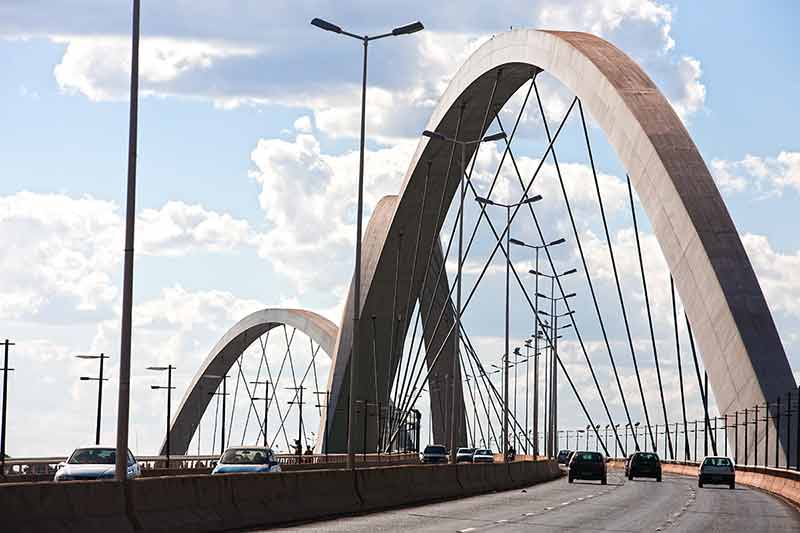
The reason Brasilia, the federal capital of Brazil, is a UNESCO World Heritage Site is because of its striking urban architecture.
It was built as recently as 1956 and was designed by Lucio Costa and Oscar Neimeyer.
They based their ideas on the design principles of Swiss architect Corbusier but these had never before been applied on such a big scale.
The city is in the highlands of the country located at a height of 1,000 metres.
It is shaped like a bird in flight, or it could be an aeroplane.
It is designed in numbered blocks for different actions of society such as the Embassy Section, the Banking Sector, and the Hotel Sector.
The architecture is futuristic and avant-garde.
Brasilia was designated a UNESCO World Heritage Site in 1987.
Recommended tour: Chapada dos Veadeiros – Private Multi Day Tour
8- Atlantic Forest South-East Reserves, Brazil
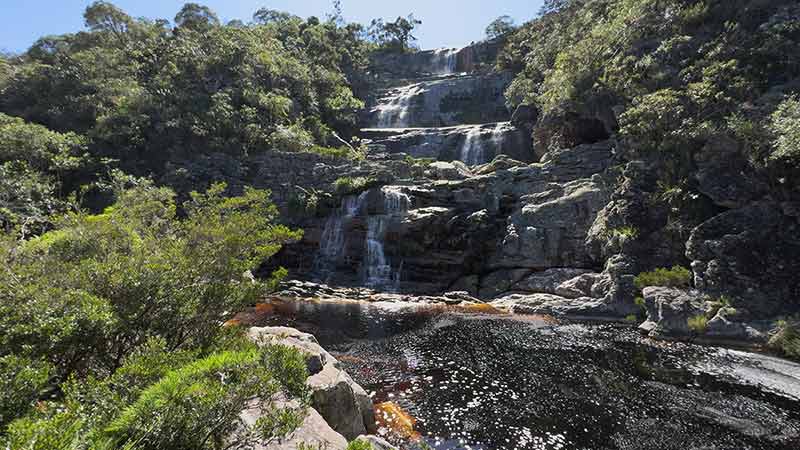
This site was given UNESCO World Heritage Site status in 1999 because of its natural beauty.
It comprises a vast 1,500 km (932 miles) system of escarpments and peaks, running parallel to the Atlantic Ocean.
As the mountain ranges are broken up in places, they have been given different names such as Serra Negra and Serra de Bocaina.
The region is popular with lovers of nature.
There are around 20,000 species of plants here and thousands of species of mammals, birds, reptiles, and amphibians, such as golden lion tamarins, jaguars, woolly spider monkeys, and maned three-toed sloths.
9- Easter Island (Rapa Nui)
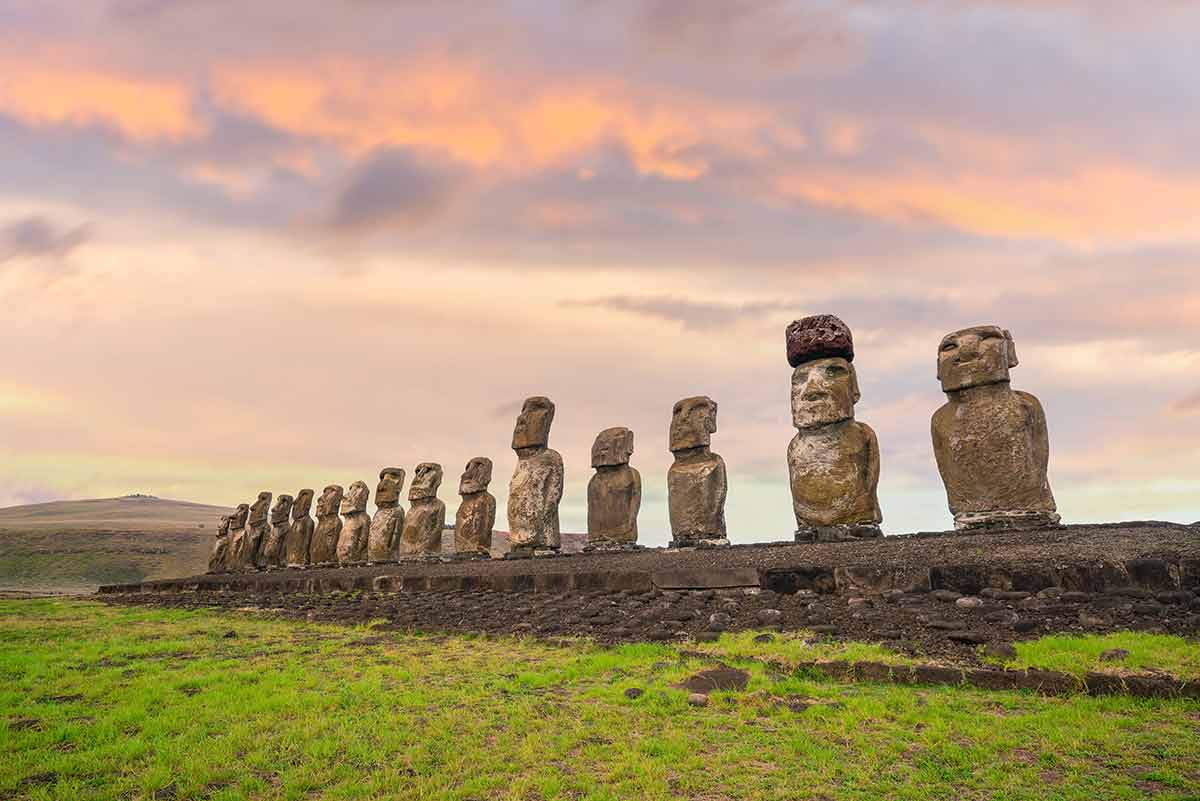
Easter Island is a special territory of Chile even though it lies 3,700 km (2,299 miles) away.
It is the most isolated island in the world, the nearest land being 2,000 km (1242 miles) away.
It became a UNESCO World Heritage Site in 1995 because of its historical and cultural heritage.
On the island, you will find large stone statues, ceremonial platforms, funeral rite structures, and shrines which were discovered by the Dutch in the 18th century on Easter Sunday, which gave the island its name.
There are 900 statues which range in height from 2 metres (6.5 feet) to 20 metres (65.6 feet) though most are 10 metres (32.8 feet).
Although they look like heads, they are full bodies.
The statues are thought to have been built between 1400 and 1650 AD.
Recommended tour: Private 2 Days Essential Tour of Easter Island
10- Cartagena, Colombia
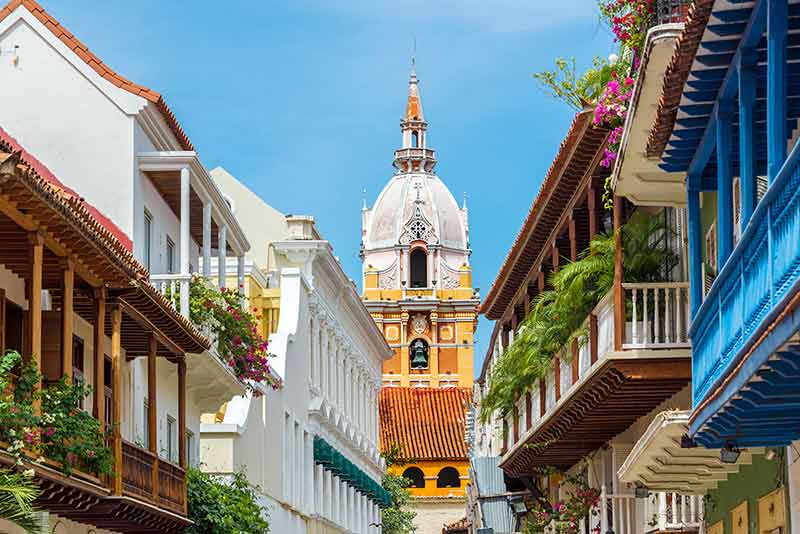
Cartagena became a UNESCO World Heritage Site in 1984 because of its stunning fortress, port, and monuments.
The highlight of the city is the fortress, the Castello de San Felipe ole Barajas which was first built in 1536 on the San Lorenzo Hill.
It was later expanded between 1639 and 1657 and was involved in several battles between the 17th and 19th centuries.
It is 41 metres (134.5 feet) above sea level, so you get great views of the old city of Cartagena which is surrounded by a wall.
The wall is 4 km (2.48 miles) long and was built to protect the city from invaders.
You can walk on the walls and if you go at sunset, you will be rewarded with a spectacular view.
The Old City is beautiful with its colonial buildings including monasteries, churches, palaces, and mansions.
When you enter through the main gate, you will see a magnificent clock tower and throughout the city are statues of historical figures such as Simon Bolivar.
The bohemian Getsemani district is worth visiting for its artistic vibe, interesting eateries, and boutique guest houses.
Recommended tour: 4-Hour Private Tour of the Emblematic Sites of Cartagena
Looking for more in Colombia? Read:
11- Iguacu/Iguazu National Park, Brazil and Argentina
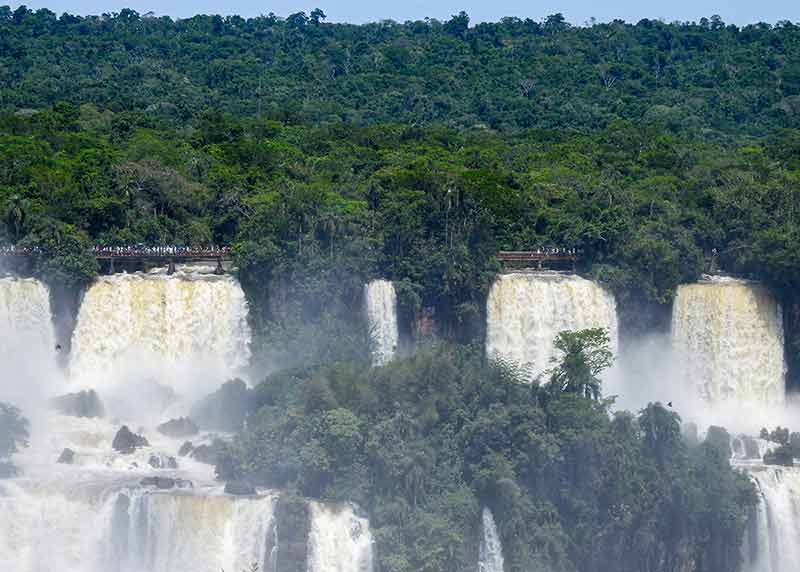
These two National Parks are on either side of the border between Argentina and Brazil.
The park on the Brazilian side is called Iguacu and the park on the Argentinian side is Iguazu.
Both are home to the stunning Iguazu Falls, a series of 275 amazing waterfalls which tumble into the Iguazu River.
On the Argentinian side, you can view the falls from a speedboat but be prepared to get very wet.
Otherwise, you can hike one of the trails on both the bottom of the falls and then the upper circuit.
There is just one trail on the Brazilian side.
In both parks, you have the opportunity to see the spectacular Devil’s Throat, a group of 14 falls shaped like a horseshoe which cascade for 80 metres into a white pool covered in mist.
These National Parks became a UNESCO World Heritage Site in 1984.
Recommended tour: Private day tour to Iguazu Falls Brazil, Bird Park and Itaipu Dam
12- Ischigualasto/Talampaya National Parks, Argentina
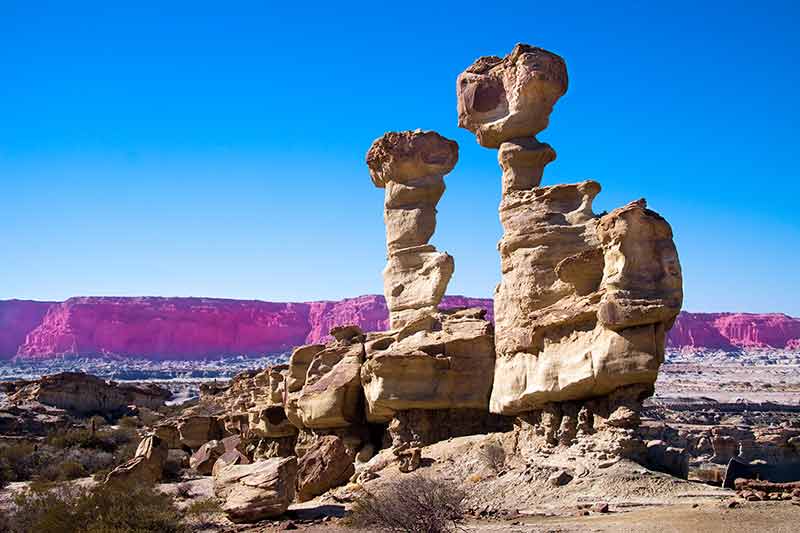
These two National Parks, which became a UNESCO World Heritage Site in 2000, are in the desert area of the Sierra Pampeanas.
They cover a massive 275,300 hectares (680,281 acres) and are known for their fantastic rock formations.
Both are remote but can be visited, albeit only on a guided tour.
Talampaya is famous for its dramatic gorge with 150-metre-high almost vertical walls as well as 2,000-year-old cave paintings.
It is also famed for the Gaudi Rocks which are natural rock formations that look like different things, for example, a condor and a camel.
Some of the oldest dinosaur remains have been discovered in Ischigualasto National Park.
As in Talampaya, there are some fantastic natural rock formations, one looking like a sphynx and another, a submarine.
The most spectacular, however, looks like the surface of the moon and is called Moon Valley.
13- Los Glaciares National Park, Argentina
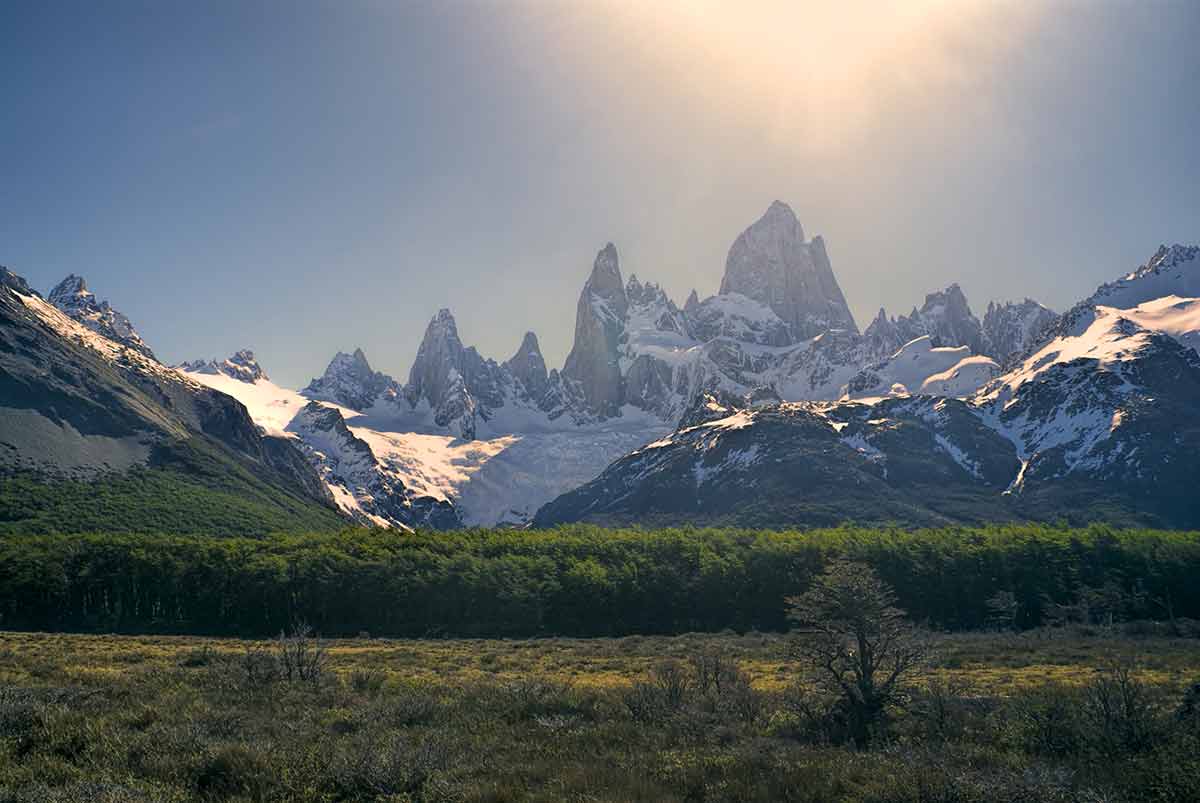
Designated a UNESCO World Heritage Site in 1981, Los Glaciares National Park is a wilderness with craggy mountains and enormous glaciers covering an area of 6,000 square km (2316.6 square miles).
The highlight is a glacier called Perito Moreno in the south of the park.
It is 30 km (18.6 miles) long and 700 metres (2296 feet) deep at its deepest point.
You can go and see it as there are boardwalks on the hillside opposite the glacier.
Other things you can do in the park are take glacier walks, enjoy boat trips and visit remote glaciers.
The town of El Chalton in the north of the park leads to the spectacular Fitz Roy and Cerro Torre mountains, as well as hanging glaciers, lakes, and woodlands.
Recommended tour: Los Glaciares National Park: Blue Safari
14- The Churches of Chiloe, Chile
The churches of Chiloe are located on the island of Grande de Chiloe in the Chiloe Archipelago in southern Chile, a short ferry ride from Puerto Montt on the mainland.
The Chiloen people, however, are very different from the Chileans as they are into witchcraft and mythology.
There are 70 stunning wooden churches on the island, 16 of which were granted UNESCO World Heritage status in 2000.
The Jesuits, who came to spread Christianity to the islands, built the churches in the 18th and 19th centuries.
They were built on high ground and, unlike Spanish colonial architecture, were constructed of native timber with wood shingles.
The shingles have helped to preserve the churches from the humid climate.
Recommended tour: Shared Full Day Tour in Chiloe Island with Pickup
15- Cueva de la Manos, Rio Pinturas, Argentina
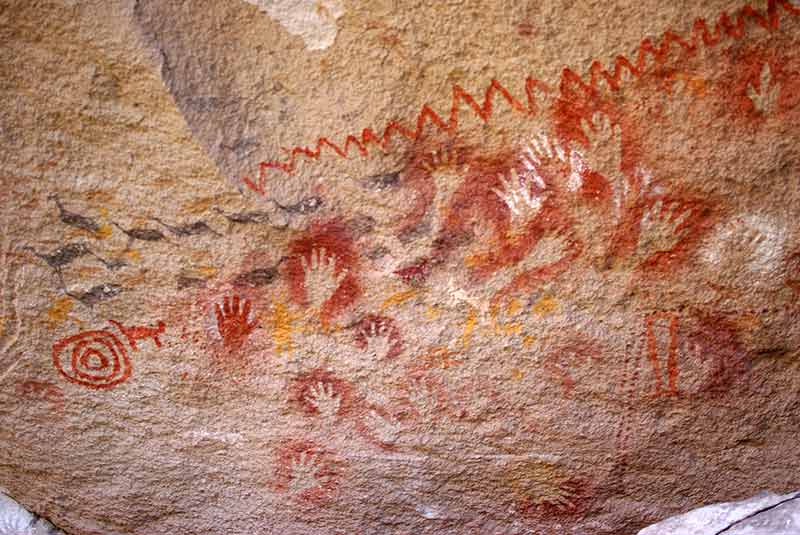
This UNESCO World Heritage Site, designated in 1999, translates to the ‘Cave of the Hands’.
Here you will find 829 9,000-year-old paintings of hands.
It is thought that they were stencilled onto the rocks by blowing paint through a piece of bone.
Because the area is dry and the sun doesn’t shine on the paintings, they have been well-preserved through the centuries.
It is interesting to note that all the hands are left and male.
There are also paintings depicting hunting scenes, as well as human figures and animals.
16- Arequipa, Peru
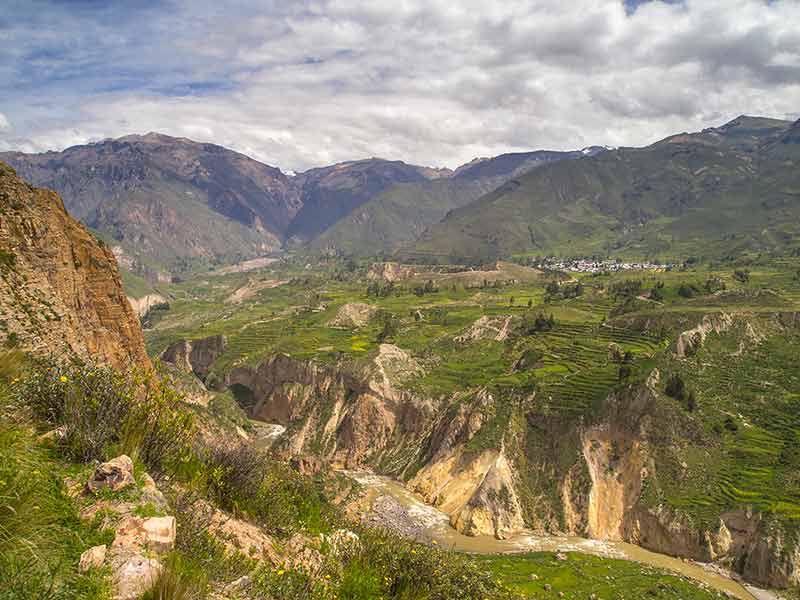
A UNESCO World Heritage Site since 2000, the historical centre of Arequipa is beautiful.
The buildings have a Spanish colonial influence, but they have been constructed from the white and pink volcanic rock of the area rather than having the typical whitewashed walls.
This makes them look more imposing.
The city has a stunning monastery, the Monasterio Santa Catalina, which is virtually a city in itself, covering 20,000 square metres (215,278 square feet).
It dates to 1580 and has narrow cobblestoned streets with red walls and blue private sleeping quarters.
Daughters of the wealthy would spend four years here in silence and then decide if they wanted to stay or re-enter the outside world.
You can see their plain and simple rooms as well as the communal kitchen.
Around 20 nuns still live here.
Recommended tour: Guided Tour of the City of Arequipa with Pickup Included
17- San Augustin Archaeological Park, Colombia
The San Augustin Archaeological Park became a UNESCO World Heritage Site in 1995. You can explore the park in a jeep, on foot, or even on horseback.
The Archaeological Park is like a museum displaying works of art between 1,500 and 2,000 years old.
Within an area of 50 square kilometres (19.3 square miles), there are 300 statues of gods, mythical animals, human figures, and human/animal hybrids.
San Augustin Archaeological Park contains the biggest collection of megalithic sculptures in South America, and it is also home to the largest burial place in the world.
Recommended tour: Archaeological Park in San Agustin 3-Day Trip from Bogota
18- Sucre, Bolivia
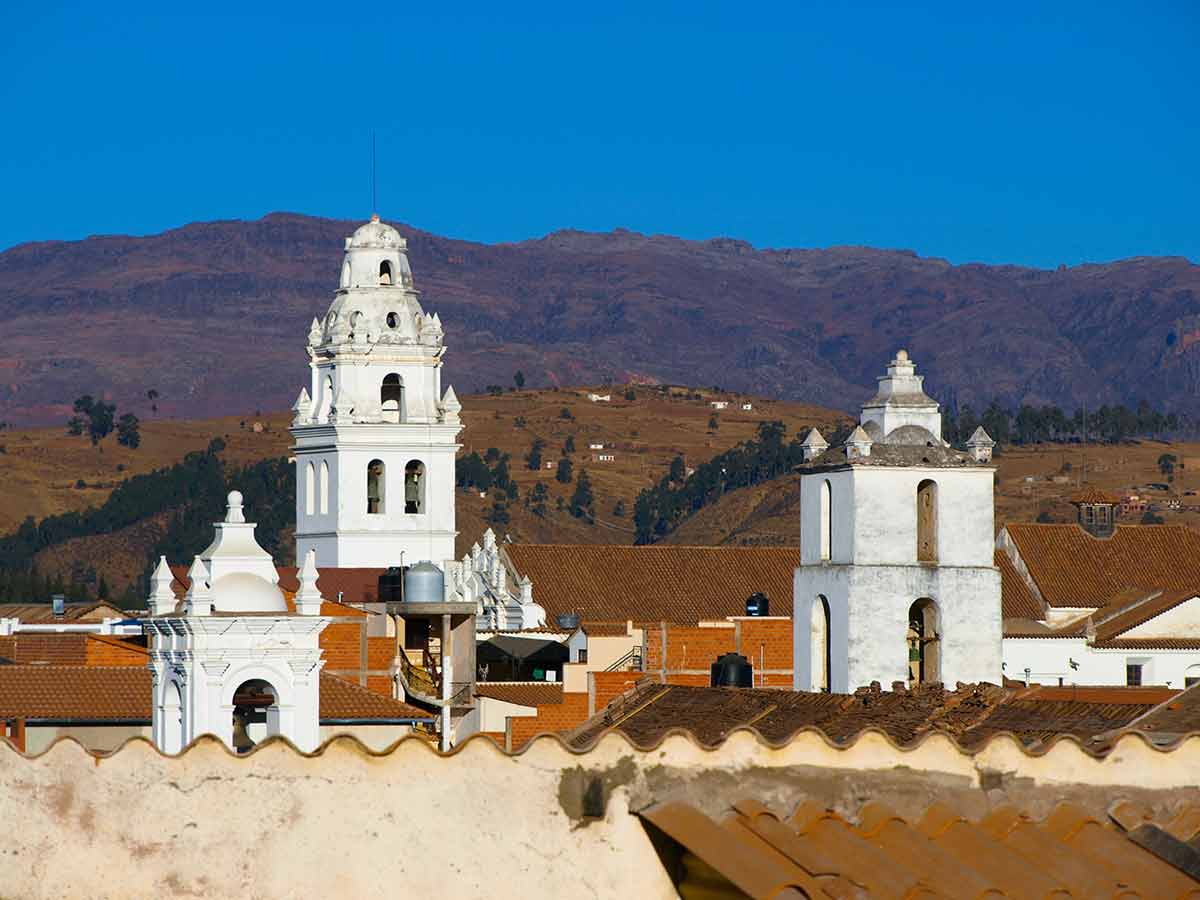
Sucre, designated a UNESCO World Heritage Site in 1991, is the constitutional capital of Bolivia, founded in 1539 by the Spaniard, Pedro de Anzurez.
It has a beautiful and well-preserved historic centre with colonial architecture from the 16th and 17th centuries.
The buildings are whitewashed with orange roofs.
It also became a UNESCO World Heritage Site because Bolivia’s Declaration of Independence was signed here in 1825, and the first independent government was formed here.
There is a lot to see in Sucre including beautiful churches, such as the Metropolitan Cathedral and the Basilica of San Francisco which has striking tombs and mausoleums.
Visit the Libertad, a museum about the independence struggle.
Recommended tour: Sucre City Tour With Visit to Cretaceous Park
19- Quebrada de Humahuaca, Argentina
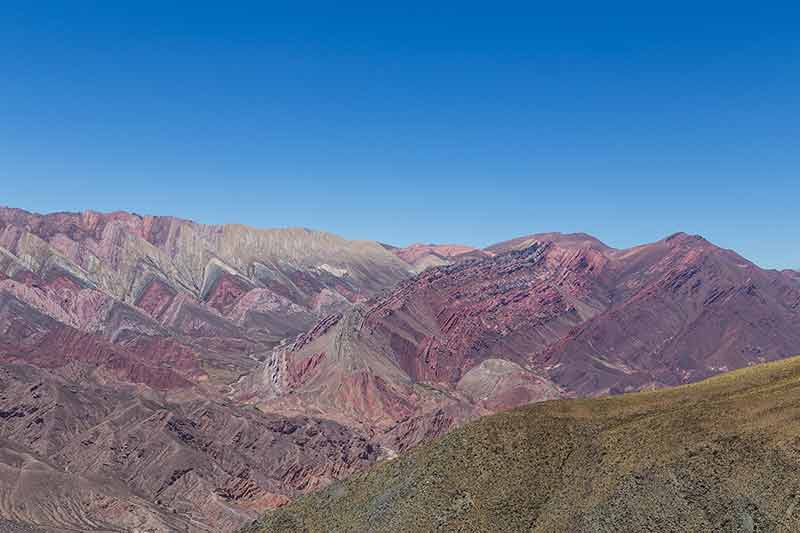
Quebrada de Humahuaca was designated a UNESCO World Heritage Site in 2003 for its historical significance and also for its spectacular desert landscape.
The Quebrada de Humahuaca was an Incan trading route following the Rio Grande for 155 km (96 miles).
This stunning valley houses prehistoric settlements, but the highlights are the vividly coloured hills and mountain sides.
The most striking area is the Serrania de Hornocal, a mountainous landscape which looks like multi-coloured shark teeth.
It has been named the Rainbow Mountains.
Another impressive part of the trail is the Quebrada de la Senoritas where you will see some beautiful red, white, and grey rocks.
Recommended tour: From Quebrada de Humahuaca to Yungas Jungle by the Qhapac Ñan
20- Huascaran National Park, Peru
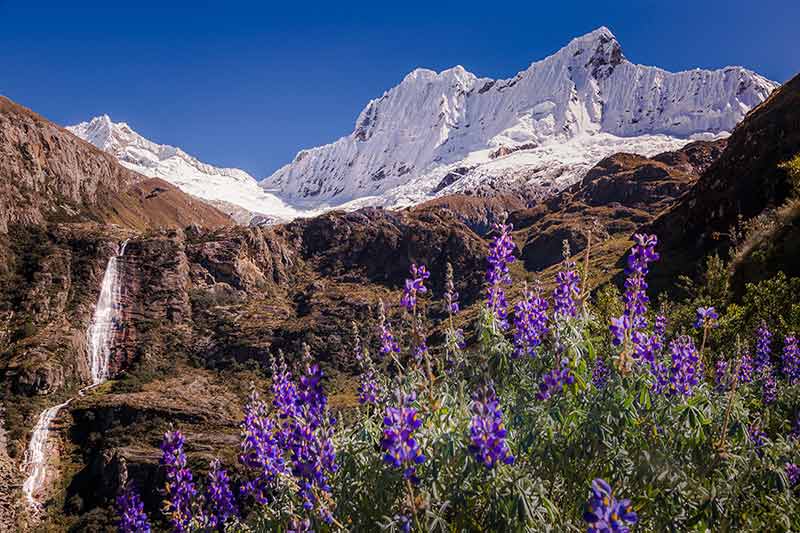
Huascaran National Park, designated a UNESCO World Heritage Site in 1985, houses the highest tropical mountain in the world.
There are 660 tropical glaciers, 330 glacial lakes, and many trails to follow in the park.
The largest lake in the park, Laguna Paron, is surrounded by glacial mountains as high as 6,000 metres (19,700 ft) though the highest mountain in the park is Mount Huascaran at a height of 6,768 (22,205 feet).
The park is enormous, measuring 340,000 hectares (840,158 acres) and has hundreds of plant species and 120 different animal species, including the Andean spectacled bear, puma, and Andean fox.
Recommended tour: LAKE 69 Camping on Private Tour – Huascaran National Park
For more UNESCO World Heritage sites read:
- 20 UNESCO World Heritage Sites To See Before You Die!
- 20 UNESCO World Heritage Sites In USA
- 20 UNESCO World Heritage Sites In Europe
- 20 UNESCO World Heritage Sites In Asia
- 20 UNESCO World Heritage Sites In South America
- 20 UNESCO World Heritage Sites In Mexico
Plan Your Trip

Rent A Car – Find the best car rental rates at Discover Cars. They compare car hire companies to provide you with the best deal right now.

Find A Hotel – If you’re curious about this article and are looking for somewhere to stay, take a look at these amazing hotels.

